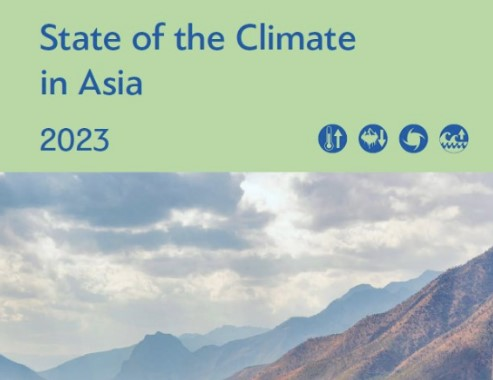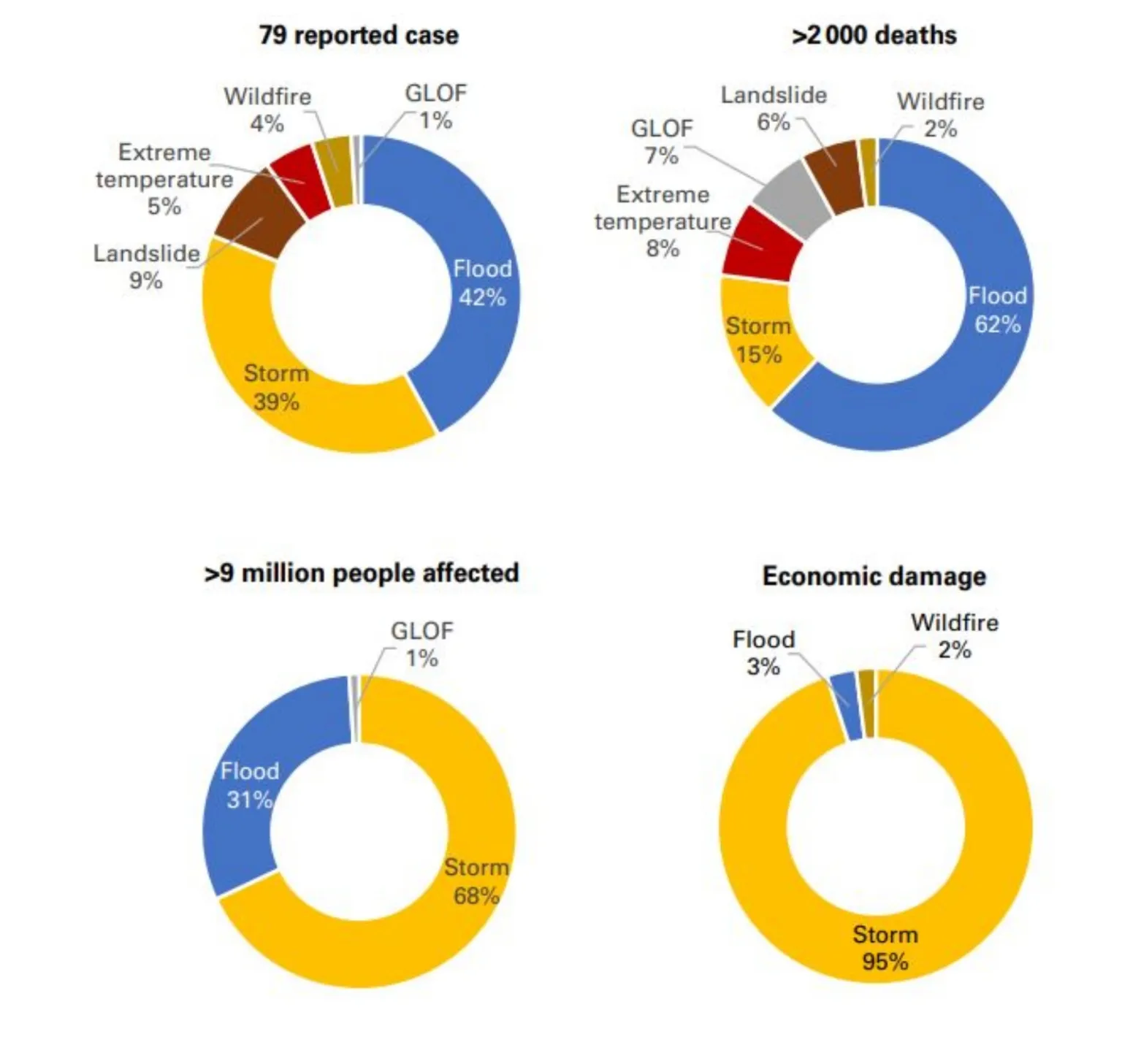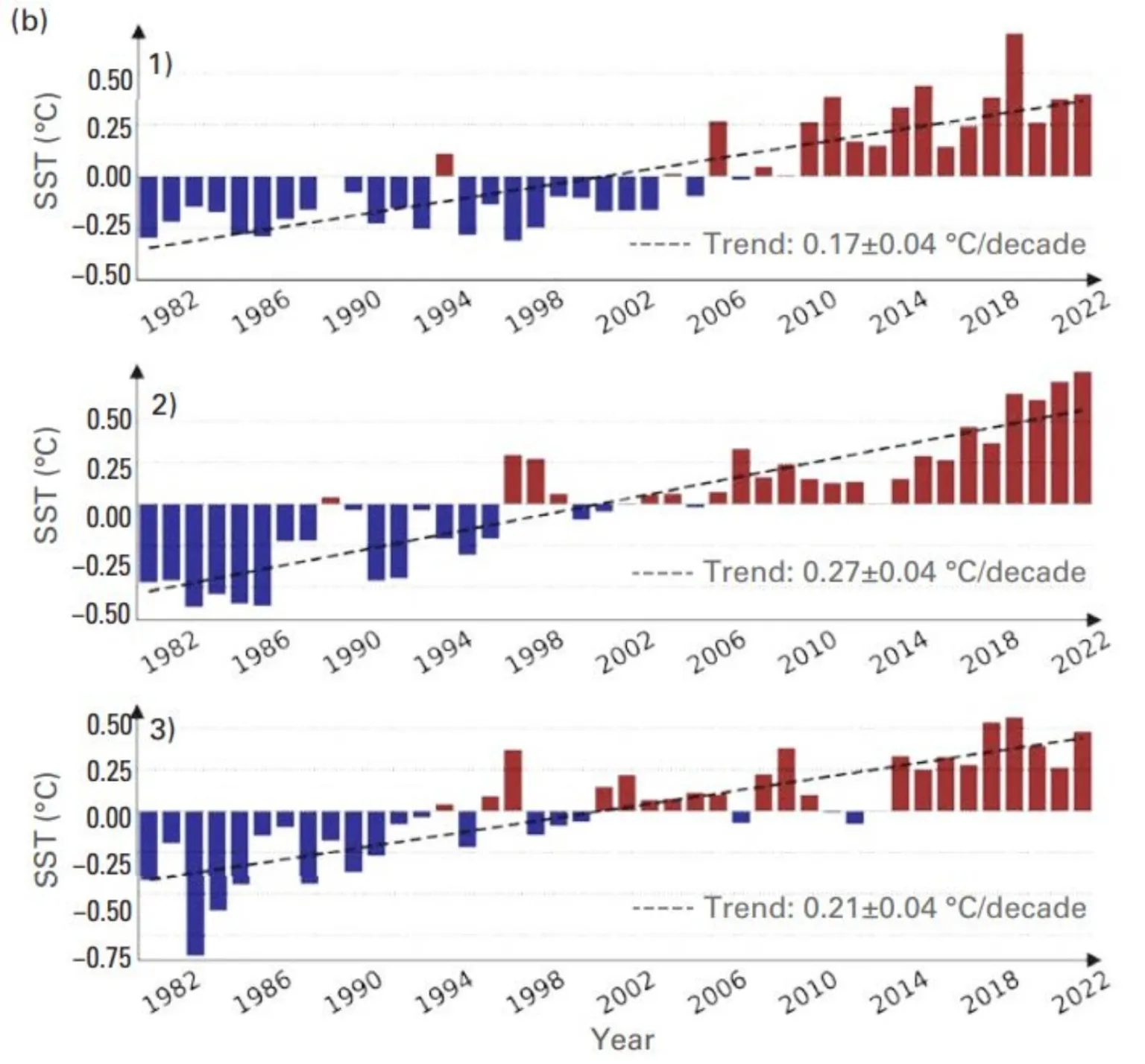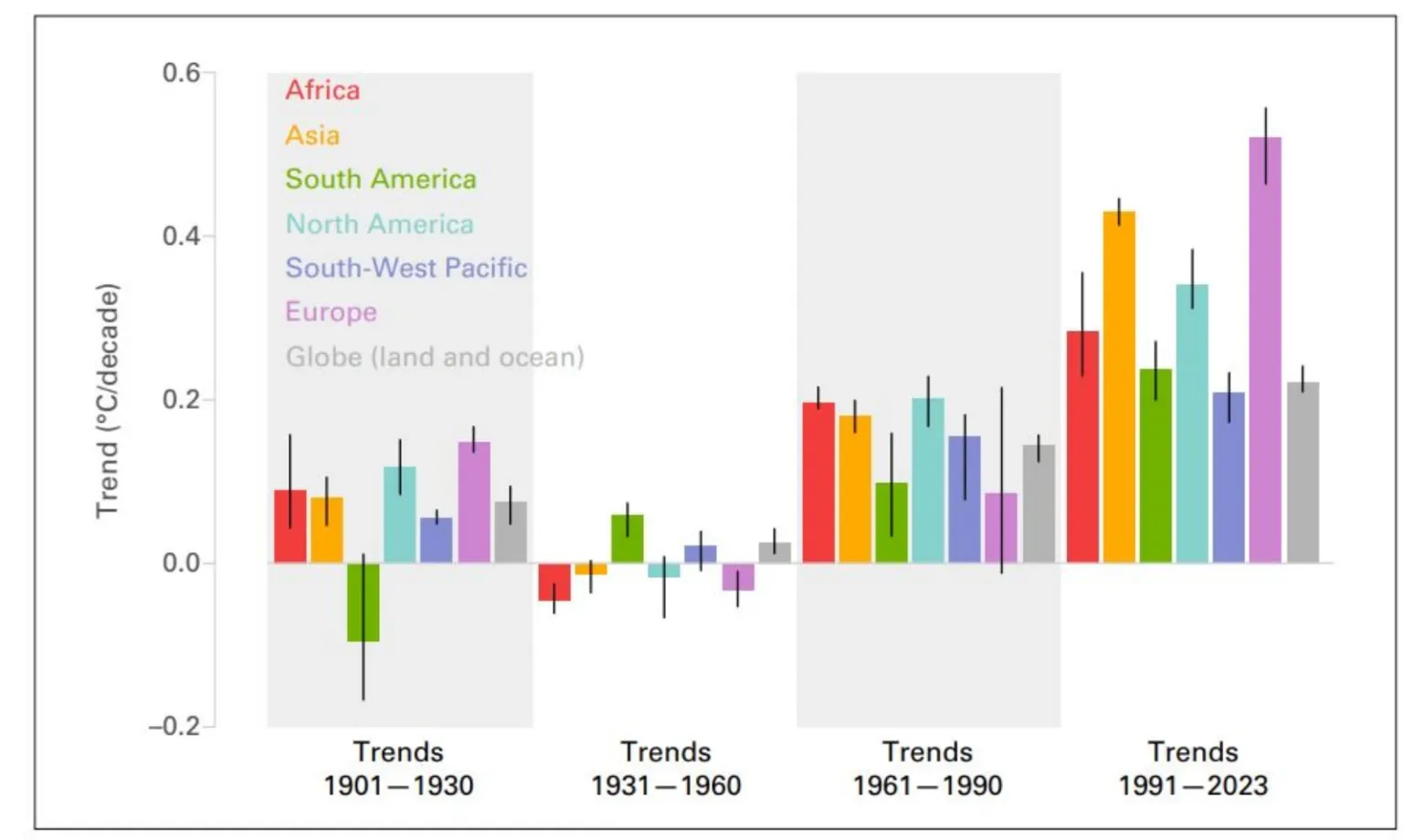Description

Disclaimer: Copyright infringement is not intended.
Context:
- A New World Meteorological Organisation report released 5 Points that tell the status of the climate crisis in Asia.
Five main findings of the report:
- Hydrometeorological Hazards in Asia:
- In 2023, Asia experienced 79 events related to hydrometeorological hazards.
- These events impacted over nine million people and resulted in over 2,000 direct deaths.
- Floods and storms accounted for 80% of these events.
- Temperature Trends:
- The average annual surface temperature in Asia was 1.87°C above the 1961–1990 average and 0.91°C above the 1991–2020 average.
- The world has become at least 1.1°C warmer than the pre-industrial average.
- Asia's warming rate is accelerating, with recent decades experiencing double the warming trend compared to previous periods.

Fig: Overview of such events that took place in Asia last year and their impact
- Glacier Mass Loss in High Mountain Asia (HMA):
- In the glaciological year 2022-2023, 20 out of 22 observed glaciers in the HMA region showed continued mass loss.
- Record-breaking high temperatures and dry conditions in the East Himalayas contributed to this mass loss.
- Precipitation Patterns:
- Rainfall was below normal in parts of Turkmenistan, Pakistan, Myanmar, and India in 2023.
- Summer monsoon season rainfall in India was about 6% below the 1971–2000 average.
- Excess rainfall was observed in certain regions, such as the lower course of the Indus River (Pakistan) and the Tenasserim Range (Myanmar).
- Sea Surface Temperature (SST):
- Global average sea surface temperatures have been unusually high since mid-March 2023.
- The North-west Pacific Ocean experienced the warmest sea surface temperature anomalies on record.
- Warming of the upper-ocean in specific areas, such as the North-Western Arabian Sea and the seas east of Japan, exceeded the global average by more than three times.

Fig: : Area-averaged time series of sea-surface temperature anomalies relative to the 1982–2022 reference period (in degree Celsius) within the three areas: 1) the Arctic area north of 60°N; 2) the north-west Pacific Ocean area; and 3) the Indian Ocean area. The linear trend over the full period is indicated as a dashed line.

Fig: Trends in mean surface air temperature for the six WMO regions and the global mean (degree Celsius) over four sub-periods using the six datasets.
Conclusion:
- As per the report, Asia is significantly impacted by climate change, with various adverse effects observed across the region.
- These findings underscore the urgent need for comprehensive and coordinated efforts to mitigate and adapt to the impacts of climate change in Asia. Effective strategies should include measures to reduce greenhouse gas emissions, enhance resilience to extreme weather events, and promote sustainable management of natural resources. Addressing climate change in Asia requires collaboration at local, national, and international levels to safeguard the well-being of communities and ecosystems in the region.
Source:
https://indianexpress.com/article/explained/explained-climate/wmo-report-climate-crisis-asia-9286724/
|
PRACTICE QUESTION
Q) Discuss the key findings of the recent World Meteorological Organisation report on the climate crisis in Asia. How do these findings underscore the urgent need for coordinated efforts to address climate change in the region? ( 250 words)
|















